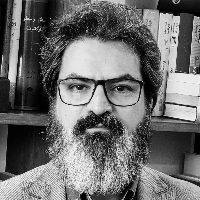Applying the "Six-Stage Character Transformation in Drama" Theory in the TV Series Sahebdelan, Oo yek freshteh boud (She Was an Angel), Eghmaa, and Mive-ye mamnooe (Forbidden Fruit)
The purpose of this research is to analyze the character transformation process through the application of the "Six-Stage Character Transformation in Drama" theory, using the TV series Sahebdelan, He Was an Angel, Aghmaa, and Forbidden Fruit as case studies. This research aims to examine the various types of character transformations in these dramas and demonstrate how the diversity of character transformations in a drama contributes to its quality.
The research method is qualitative content analysis, which includes specialized techniques in processing research data. This method seeks to perceive the perceptual and emotional aspects of messages or to understand the hidden and extractable aspects of statements and contents. Therefore, in addition to describing the state and nature of the phenomenon or subject, the researcher in this path also explains the how and other dimensions of it, as well as the qualitative analysis of the content of the work.
The six types of character transformation, namely resurrection, fall, ascent, decline, regression, and deterioration, were all present in the dramas examined in this research. In other words, the character transformations in these dramas are not solely limited to the category of resurrection (repentance), but other types of transformations also exist. Nevertheless, in a series like Sahebdelan, where character transformation is more diverse, the quality of the drama is also higher.
Based on the findings of the analysis of the character transformation process in the target dramas, it can be concluded that to have a screenplay of desirable quality, in addition to the transformation of the protagonist, the other characters in a screenplay should also undergo transformation, although not to the same extent as the protagonist.
پرداخت حق اشتراک به معنای پذیرش "شرایط خدمات" پایگاه مگیران از سوی شماست.
اگر عضو مگیران هستید:
اگر مقاله ای از شما در مگیران نمایه شده، برای استفاده از اعتبار اهدایی سامانه نویسندگان با ایمیل منتشرشده ثبت نام کنید. ثبت نام
- حق عضویت دریافتی صرف حمایت از نشریات عضو و نگهداری، تکمیل و توسعه مگیران میشود.
- پرداخت حق اشتراک و دانلود مقالات اجازه بازنشر آن در سایر رسانههای چاپی و دیجیتال را به کاربر نمیدهد.



